
The 3 roof shells of the Grand Theatre span a force line to the 3 towers. the common architectural language of all building parts give the identity to the site and the whole New West Jinan area.
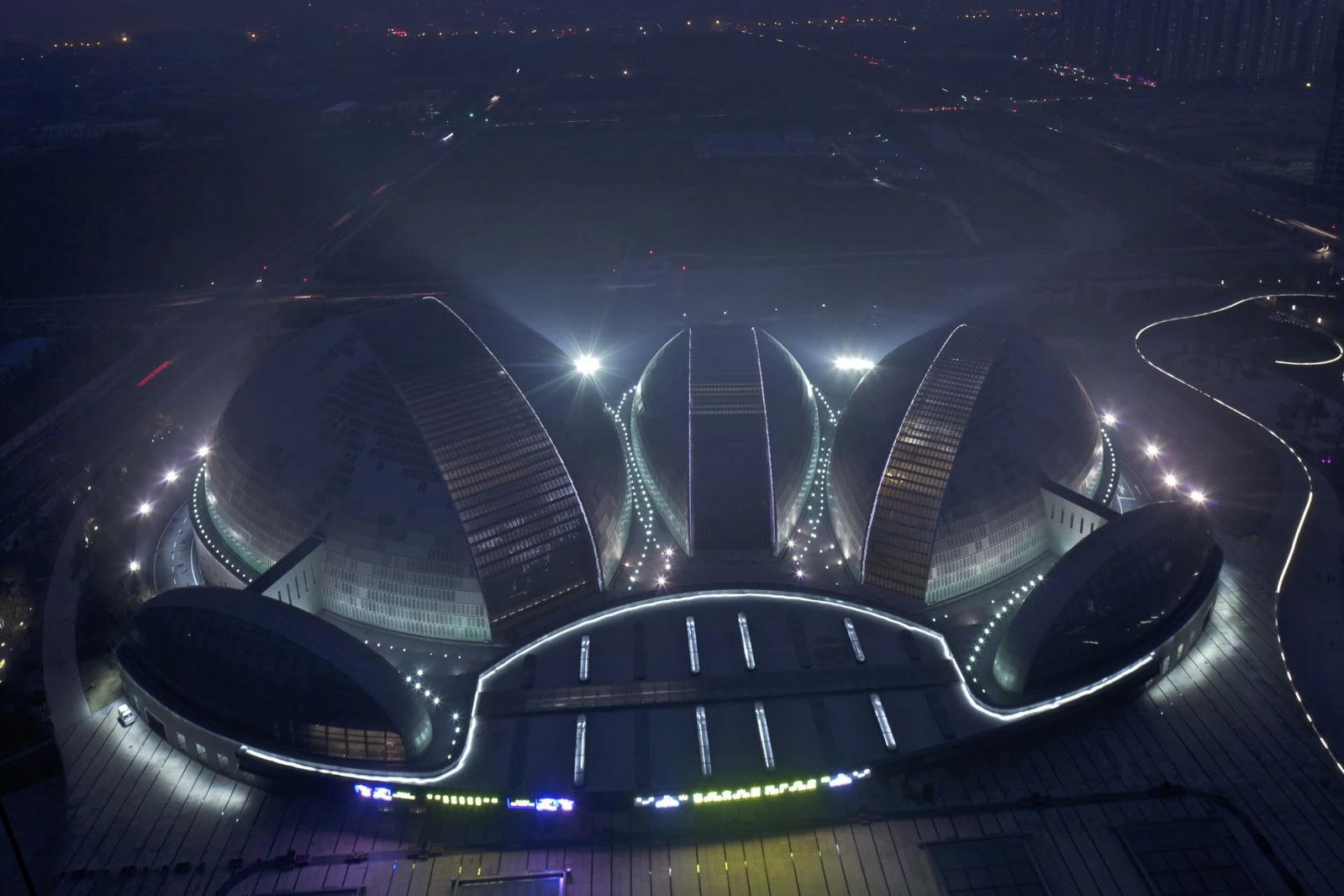
The building has a highly memorisable icon effect. Public life will be concentrated in the centre of the complex so that cultural exchange can happen. Façade concept the façade language highlights the belonging to one singular building complex. the different functions have different façade requests. the base is build out of a massive stone plinth ribbon following the shapes of the objects posed on to it. the three shells of the Grand Theatre and the side buildings posed on the podium are covered mainly with an opaque metal cladding system and glazed strips in the centre line.

The towers are mainly out of glass and pass over the podium building down to street level. the Central Plaza façade are in continuity of the landscape design. the stoned base building follows the inspiration of lines of staff the openings are composed such as notes of a score within the staff which creates a piece of music. Both, the Tower and Grand Theatre, facades have a figurative pattern on theirs façades: the towers with a vegetal motif identifying the towers as green mountains; the Theatre shells a more abstract organic motif. the pattern is a transition element, which will visually be composed out of the vegetal mass of the surrounding park, the metal shell and its pattern.
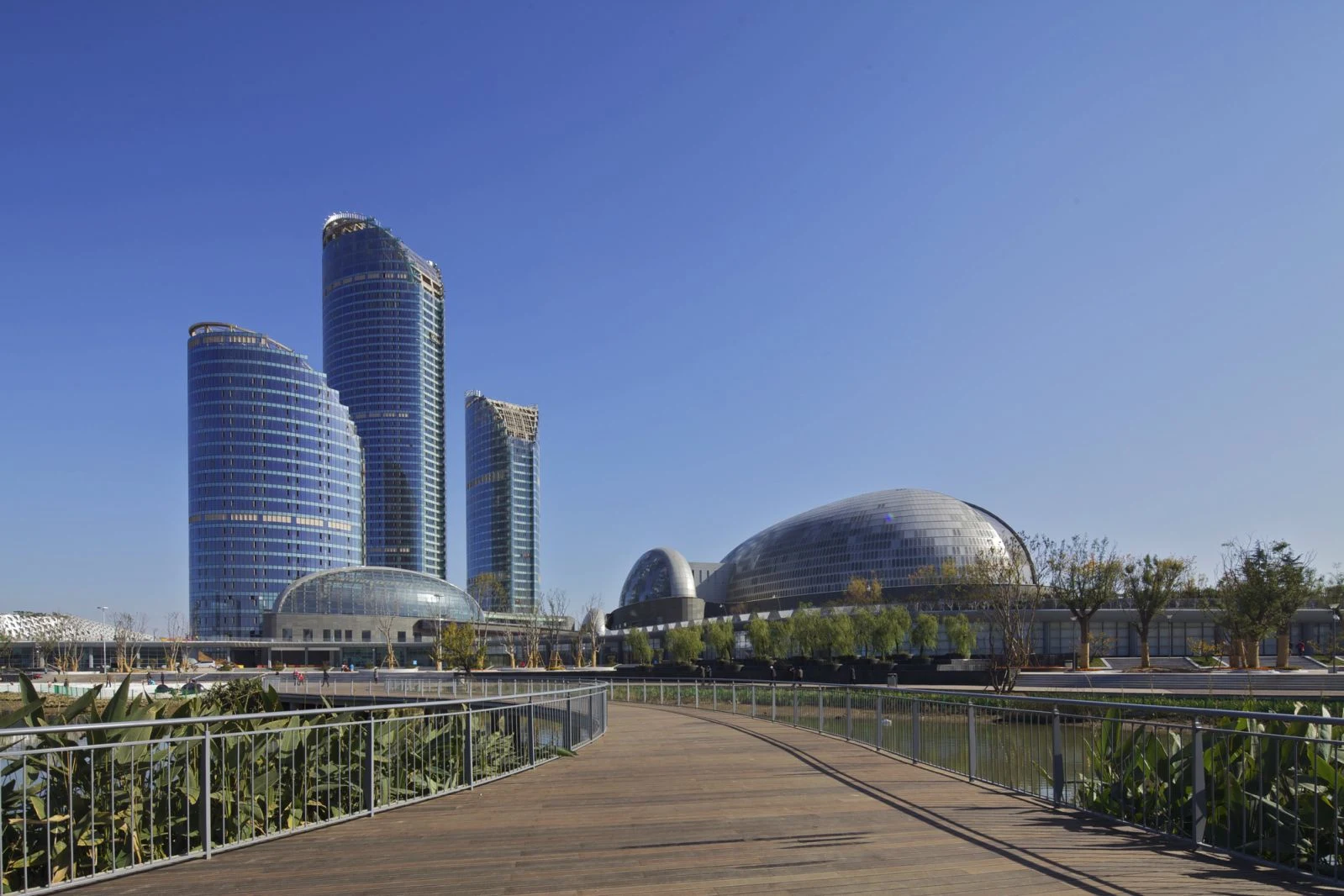
Glazing of the bases and the shells will be a minimalist design. It will mainly be visible during the night time. the Grand Theatre – Entrance Hall the public enters the Grand Theatre from the Central Plaza higher than the street level. the entrance hall is the first step through a space sequence from intense public live to the audience halls. Every spectator is invited to experience the common entrance hall as filter, an in between space before entering the 3 different lobbies from which they can enter into each of the audience halls. the entrance hall is extended all along the building facades to the limit of the 2 lateral building volumes. Centralized functions such as ticket office, tourist information on the side can be found.

Each of the 3 lobbies has a different and singular character, and the auditoriums are carefully posed such as valuable stones into their wooden box. the spectator finds himself in a big enclosed space limited by the roof shells. the roof shells are creating the identity together with the audience hall volumes. the lobbies give access to the audience halls. the public enters on the back and on the sides of the audience halls. Public environments Opera Hall lobby While entering the lobby, the Opera Hall can be discovered as a cube. the cubes’ mineral façade is covered by a thin water film which gives a light vibration effect to the volume. On each side vertical circulation is organized with stairs, bridges and glazed lifts.
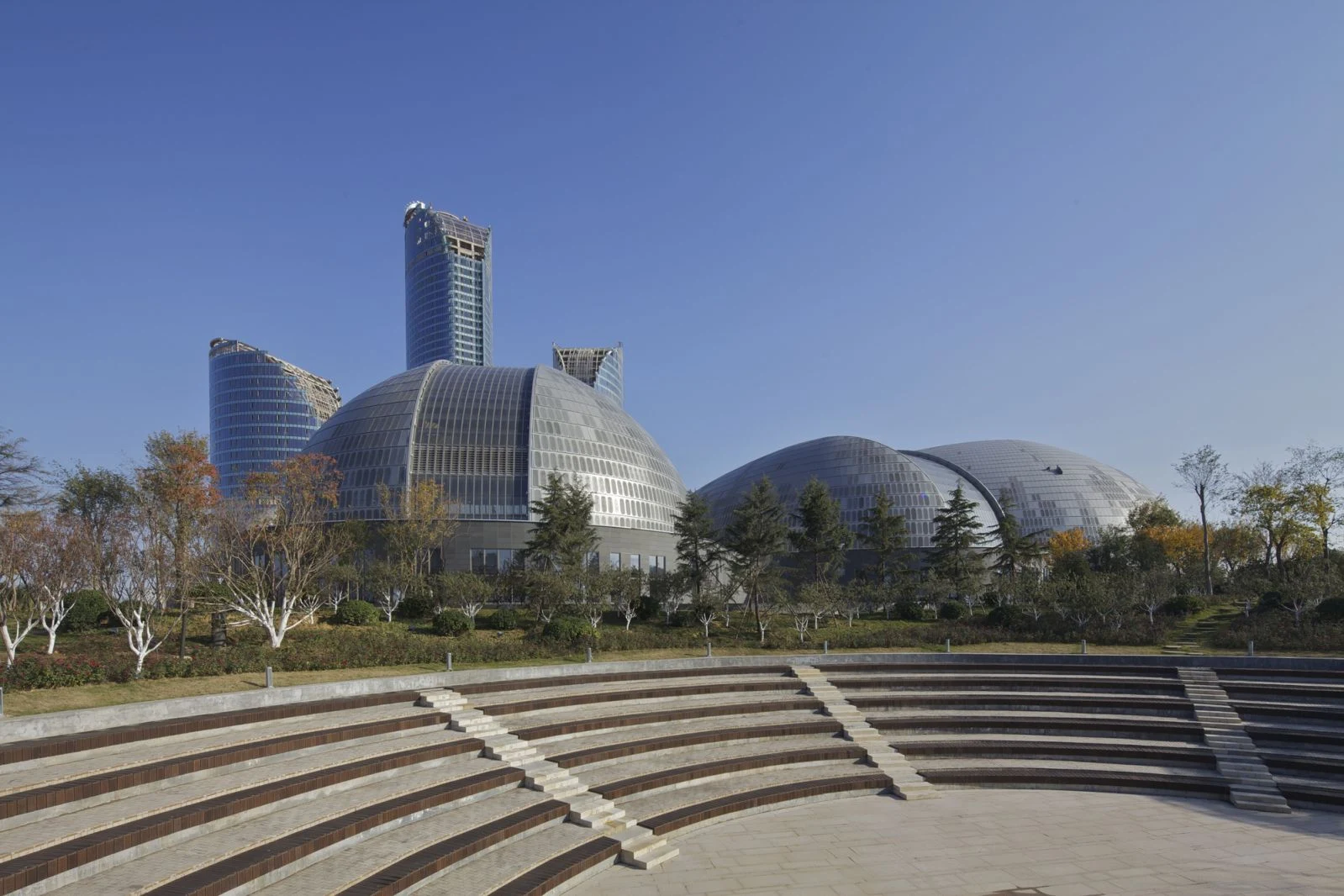
The spiral type arrangement let pass the spectators close to the shell as well as to the opera cube. On top of the opera cube a reception lobby can be found. This area has can be run independently and can be closed for spectators. Independent access can be organized from the lateral building. the reception area gives a spectacular view to the roof shell and down to the audience lobby. Opera Hall. the golden Opera Hall integrates technical requests and artistic expression within the constraints of the cube volume. the spectators discover the opera hall from the two edges or from the side of the balconies. the 2 balconies present a form of lighting lines, all connected to an edge column on each side of the stage. the column functions as lateral lighting and sound source for the stage and auditorium.

The shape of the balconies are slightly asymmetric and contrasts the parterre design which relatively strict. the balconies provide light all around the front edge which form a movement within the opera cube. the spectators can take enjoy the possible lighting effect by entering and leaving the audience hall. Multifunctional Hall the interior of the Multifunctional Hall is a very minimal interior covered in night blue tones. the multiform function has been simplified to multifunction. the main orientation will be frontal. the spectators discover the audience hall from the stage level. Various configurations of stage and spectator seats are possible to allow all kind of spectacles to take place. Concert Hall lobby the Concert Hall volume is oval.

The egg type volume can be seen from the entrance hall by entering the audience lobby. the spectator can experience a promenade all around the audience hall. the space is limited by the wooden ceiling of the shell. the shell is free standing and disconnected from the Concert Hall volume such as a dome. the free shape mirror on the outside of the concert hall mirrors the shell back onto the egg shape. And gives an effect of illusionary space the limits are not clear anymore. Dramatic lighting will give an expression of animated sky. On the backside large glazing gives a view to the Lashan river and the south-west corner of the public park. On top of the Concert Hall volume a reception lobby can be found similar to the Opera lobby.

It can be run independently and can be closed for spectators. Lift access can be found from the lateral building. the reception area gives a spectacular view to the roof shell and down to the audience lobby. Concert Hall the Concert Hall has the particularity to provide a walkway all around on the edge of the interior from which the side seats can be reached. the spectator can so experiences the audience hall before being seated. the parterre is accessible from the back of the audience hall and attached to the walkway. All around the stage and on the edge of the parterre different round shapes are placed. Each of these volumes is corresponding to a group of seats. the volumes are treated in wood equal to the floor and the stage. An organ with a minimal design is placed in the axis behind the stage. A chorus can be placed in front of it.

The walls are treated in a uniform appearance giving a surrounding effect. A metal mesh acts as an acoustically transparent curtain. Behind the curtain acoustic necessary shelves are installed. the lighting of the walls can be changed in two main modes: lighting the metal mesh from the front showing the hall in the shine of the metal mesh or light behind the mesh which makes curtain transparent and let’s appear space behind and the acoustic shelves. the color of the light can be changed to obtain different moods for the hall. the ceiling is contrasting all wooden volumes, dark out of convex shapes for acoustic purposes. A major edge break in the ceiling volume gives a dramatic effect to the organ at the end of the edge.






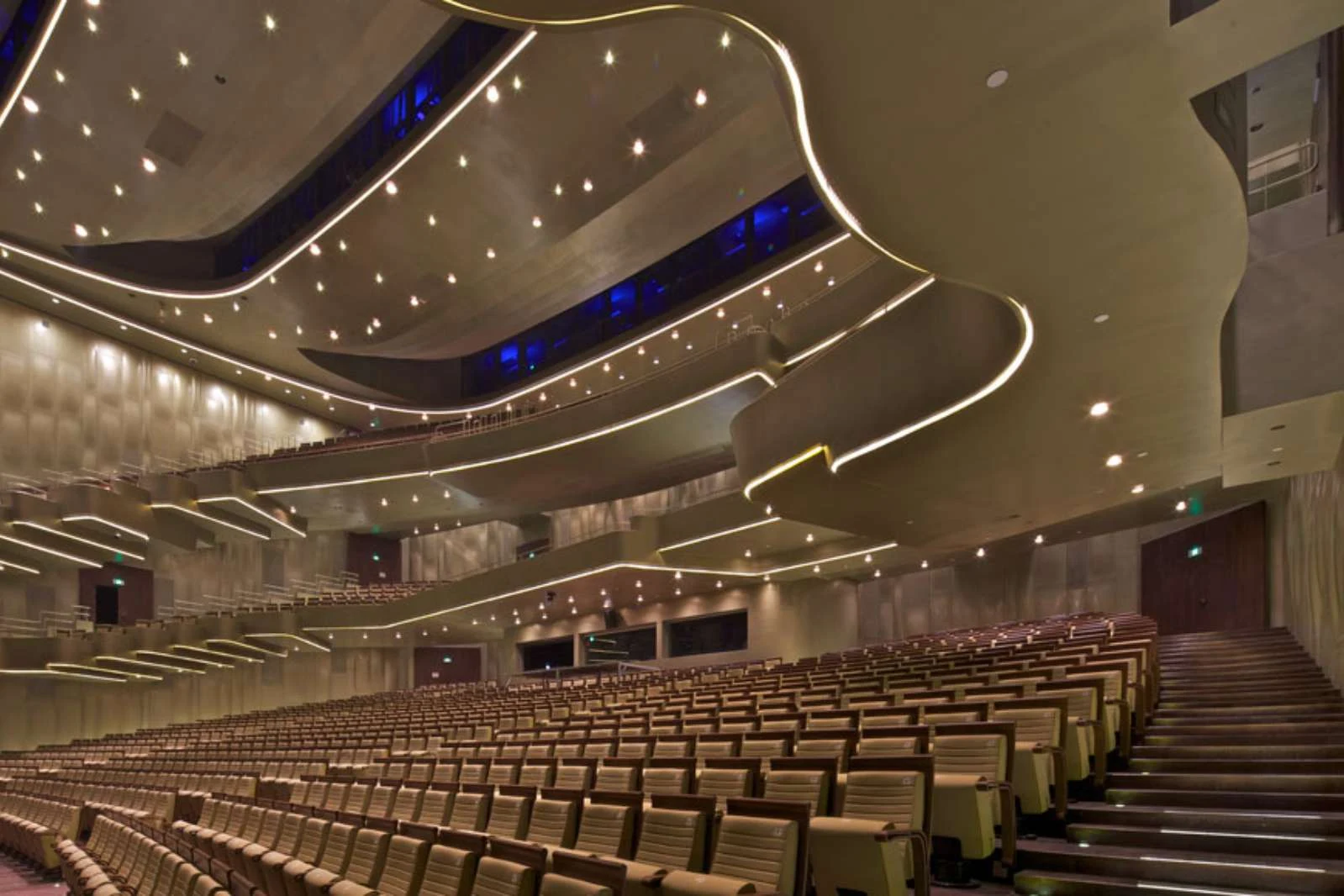

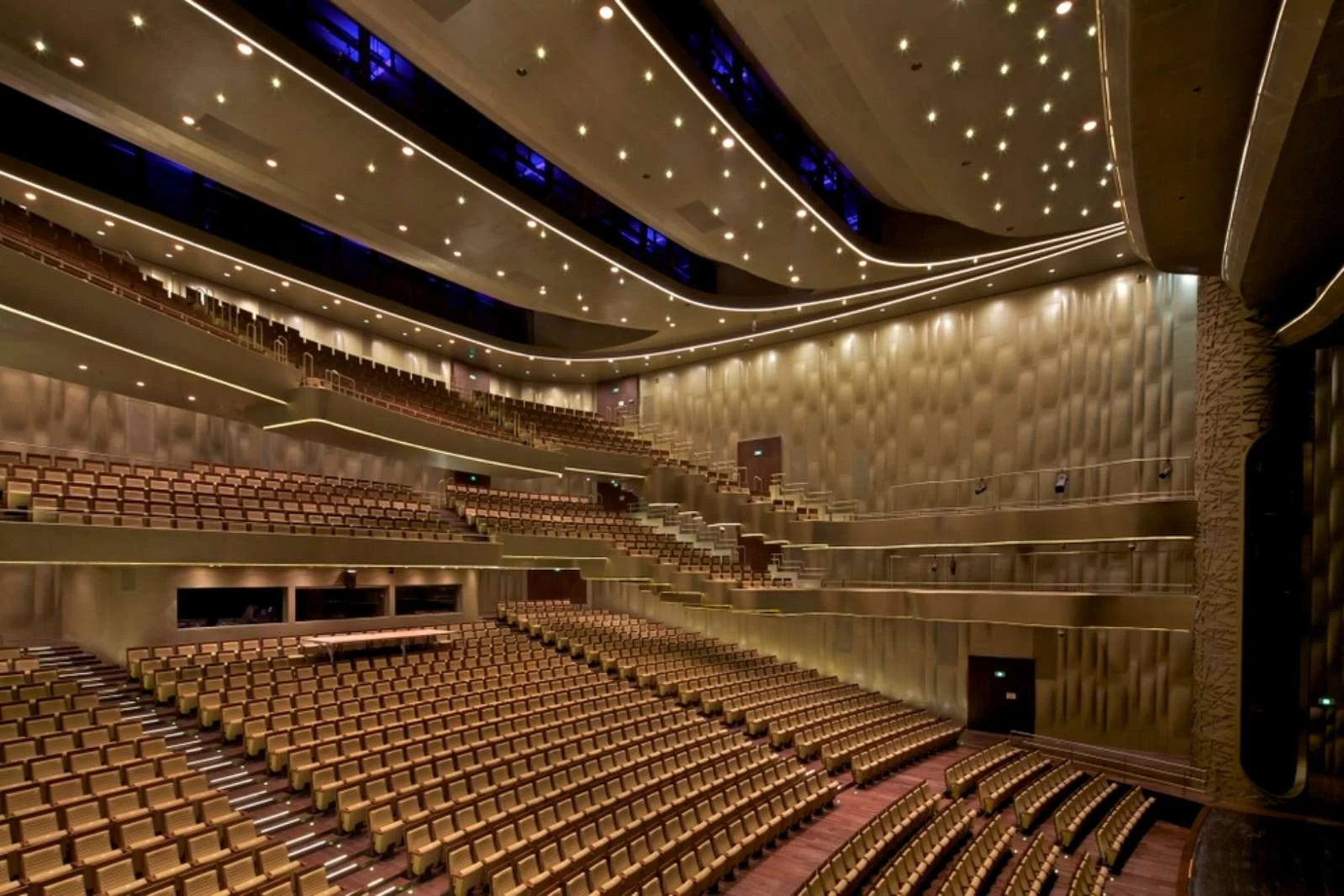
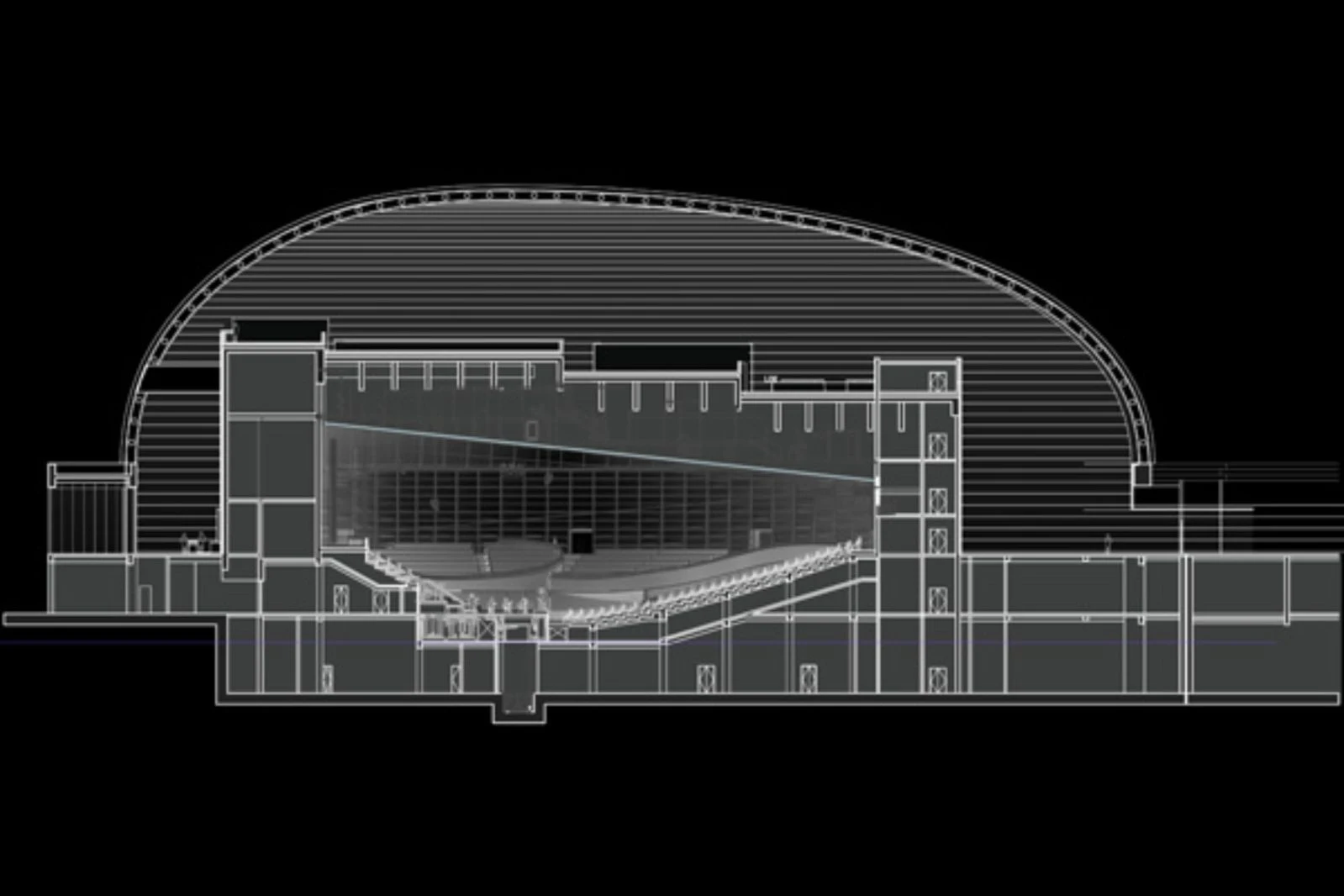
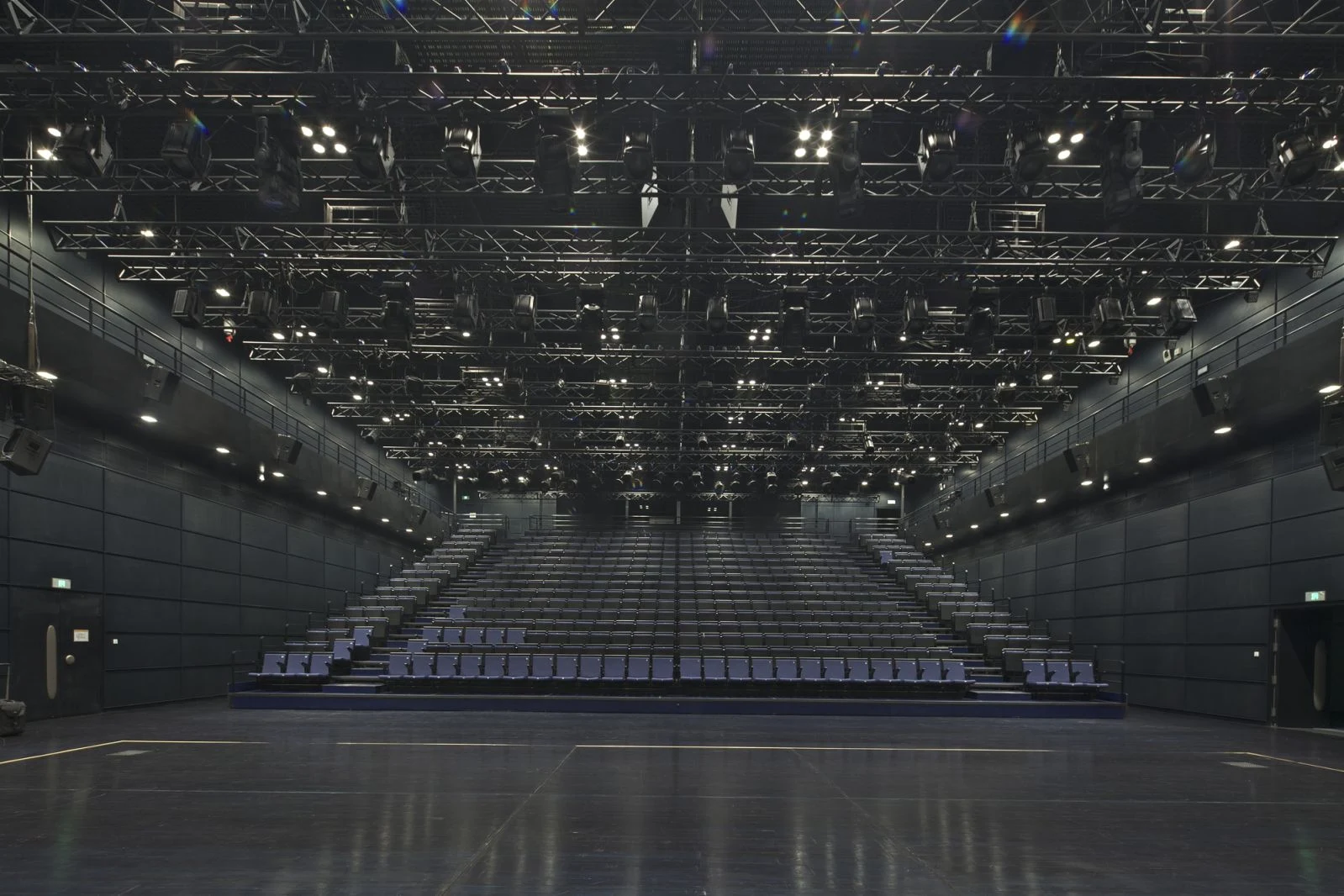
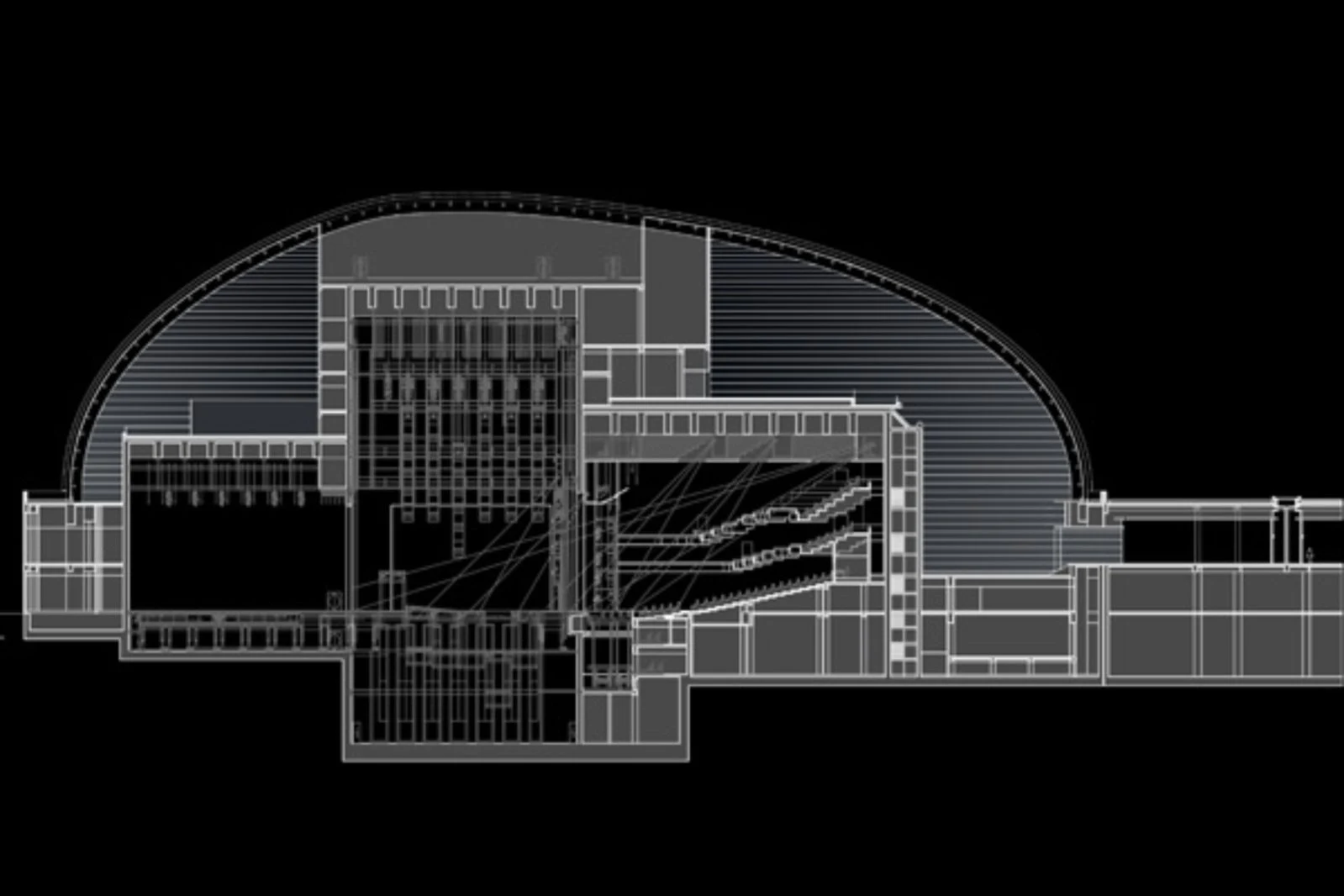
Location: Jinan, China Architects: Paul Andreu Architecte Local Architect: Biad (Beijing Institute ofArchitectural Design) Associate Architect : Richez Associés Project Team: Katharina Kriener, Stephanie Boufflet, Pengzi Zhang, Riccardo Vanigli, Olivia Faury, Antoine Barbeyer, Yanfang Niu, Kasia Dudzik, Hailin Zhai, Chen Wei, Wei Dong, Guo Kun Construction: Zhongfu Tai, Csgec Acoustician: Kahle Acoustics Scenography: Ducks Sceno Area: 72.000 m2 Cost: € 143 mil. Year: 2013 Owner: Institute of Jinan West Railway Station Area Photographs: Philippe Ruault